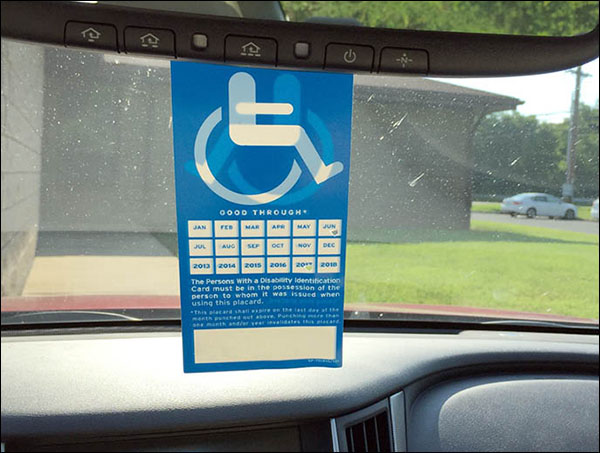
Am Fam Physician. 2017;95(7):451
The woman marched right up to me after I got out of my car. “I hate you people who use handicapped spots that are for people who are really handicapped,” she said, wagging her finger at me. I stood there, stunned. Memories of the past two years flashed through my mind. I thought back to being immunosuppressed for a rheumatologic condition and catching pneumonia while I was the attending on hospital service, and then to developing acute respiratory distress syndrome, multiorgan failure, and a rare neurologic condition called posterior reversible encephalopathy syndrome. I spent one month in a coma and on a ventilator, only to regain consciousness and be paralyzed from the neck down. Three months of rehab and endless physical therapy helped me regain use of my arms and legs. I still have trouble walking because of residual neurologic deficits and leftover myopathy that cause searing pain—hence the handicapped placard. Of course, this woman can't see my disability, and in fact, neither can most people. I've tried to make it an invisible disability. I'm pretty lucky, all things considered. I returned to working full time as a faculty family physician, and for the most part, I can cover my disability by walking very slowly and for short distances.
Developing a disability at age 50 has entirely changed the way I approach patients. I now realize how many are living with invisible disabilities. These range from depression to chronic pain to cardiac conditions, just to name a few. Although not obviously ill, people dealing with these types of illnesses have had their lives and functioning critically affected. They are invisibly disabled, like me. Now, instead of merely asking for the medical facts, I also delve deeper into how patients handle their medical condition and the disability it entails. I use motivational interviewing more than I did before becoming disabled. My patients really open up to this approach and seem to appreciate discussing their strengths in the face of adversity. I have to admit, my interactions with my patients are far more rewarding now, with my newfound empathy, than they were before my illness.
Suddenly, I realize I am standing in the parking lot. The woman is staring at my vacant face. I smile and murmur, “Have a nice day,” silently wondering what her “invisible disability” might be.—LISA MELLOR, MD

COMMENTARY
Dr. Mellor's illness was a shock to us all. Her recovery has been nothing short of miraculous. Having spent so much time as a patient, she has become an outspoken patient advocate. Her concept of invisible disabilities is a useful construct because we see so many patients struggling with diseases that happen beneath the surface, leaving no visible scars. If we can understand the invisible disabilities our patients endure, we can provide them with more comprehensive and compassionate care. This insight benefits us as physicians as much as it does our patients.
